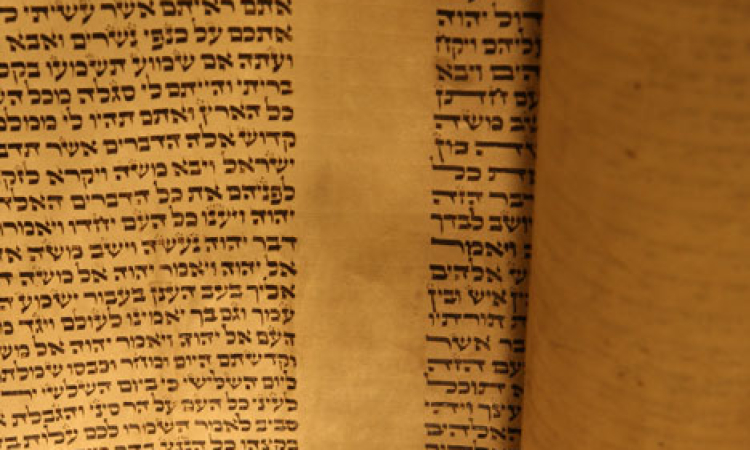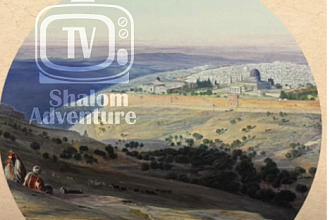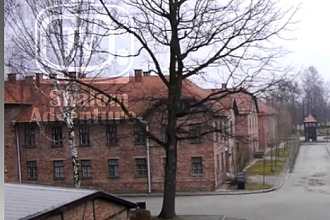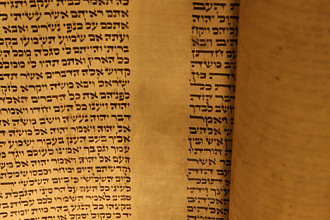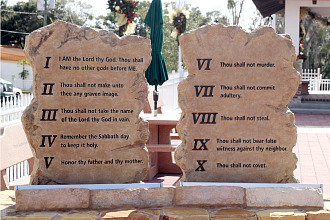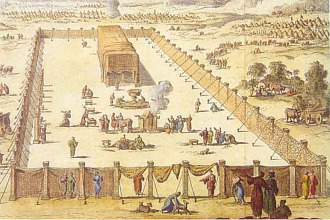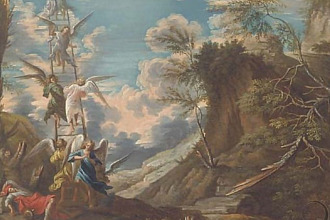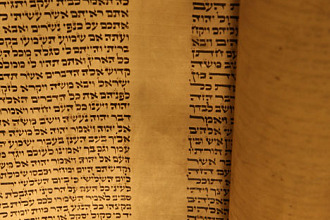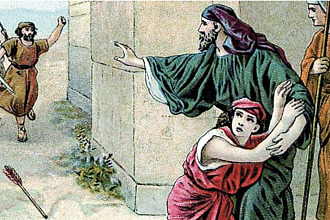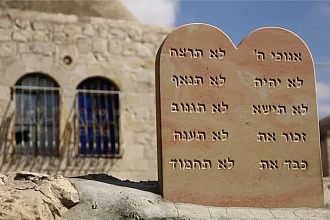Parasha for the Week: Metzora: Leviticus 14:1 – 15:33
Aftarah for the Week: 2 Kings 7:3 – 20
Apostolic Writings: Mark 1:29 - 45
Overview:
The Torah describes the procedure for a Metzora’ (a person afflicted with tzara’at) upon conclusion of his isolation.
This process extends for a week, and involves offerings and immersions in the mik-veh. Then, a Cohen must pronounce the Metzora’ pure. A Metzora’ of limited finan-cial means may substitute lesser offerings for the more expensive animals.
Before a Cohen diagnoses that a house has tzara’at, household possessions are re-moved to prevent them from also being declared ritually impure. The tzara’at is re-moved by smashing and rebuilding that section of the house; if it reappears, the en-tire building must be razed. The Torah details those bodily secretions that render a person spiritually impure, thereby preventing his contact with holy items, and how one regains a state of ritual purity.
"Consequences of Gossiping and Slandering"
Anyone affecting of Tzara’at would as a cure go into quarantine — to be all by himself until he thought about how he had hurt someone with his words and realized that it wasn’t right. Only then would he get better. Why is this sickness so different that the Torah says, He shall live alone, outside the camp shall be his dwelling? The Sages said that since metzora caused the separation of friends and the separation of husbands and wives, he should also be separated from others. Therefore, the Torah says, He shall live alone. (Arachin 16b)
Rabbi Packouz says “The isolation of the metzora gave him time for introspection. He could now recall the marriages and friendships his malicious gossip has dissolved. Removed from society, he would feel the mental anguish he caused others when his slander caused them to be ostracized.
From here we see that a person should learn from his own experiences the pain that others feel when they suffer. If anyone ever spoke lashon hara against you, you certainly did not like it. Remember those feelings and refrain from speaking against others.”
"Spiritually Clean or Unclean"
When a person was afflicted with this plague, they would have to show it to the Cohen (priest) who would determine whether the person is Tamei or Tahor - spiritually pure or impure. Then the Torah tells us the exact procedure the priest had to do in order to make the person pure: “Then the Cohen is to command that two clean living birds, cedar wood, scarlet and hyssop be brought for the one being cleansed.”
(Leviticus 14:4). What is the significance of mentioned items for the purification process?
Two birds: they should be alike in appearance in size and in value and they should be bought at the same time. The Halacha says that the species of bird must live outside of the city. According to the tractate Chullin the term Tsipur used in the verse always denotes a Kosher bird. and the word Tehorot teaches that it must also permitted for food. And the word Khayot (living) excludes dead bird or a bird lacking a limb (139b, 140a).
A Cedar Wood: the tradition says that this piece of wood should be one cubit length and whose thickness is (strange comparison) “A quarter of the thickness of the leg of a bed” (Nega’im 14:6), and the cedar should have according some tradition “cedar leaves at the top”
A Scarlet wool: some call it a crimson this wool shoul be dyed and all of the dye in the pan is unfit.
A Hyssop: Rabbi Hirsch says it must be the plant that is known simply as Ezov, and not one that has in addition a differentiating epithet.
Haftara: 2 Kings 7:3 - 20
Parasha: In the text of the parasha we have the description of "tzara'at". ll the symptom of this sickness look like leprosy and the Jewish tradition has linked this parasha to the Haftara of 2 Kings where it is about four leprous men.
Haftara: Syria had laid siege against Israel. There were four leprous men outside the city gate, who said to one another, "Why should we sit here until we die? If we say, 'Let us enter the city,' the famine is in the city, and we shall die there; but if we sit here, we shall also die. Therefore, let us desert to the Syrian camp; if they spare our lives, we shall live; and if they kill us, we shall but die." (2Kings 7:3-4). The Lord had caused the Syrian army to hear the sound of chariots, and of horses, the sound of a great army, so that they said to one another, "The king of Israel has hired the kings of the Hittites and the kings of Egypt to fight against us." So they fled away in the twilight and abandoned their tents, their horses, and their donkeys leaving the camp just as it was, and fled for their lives. (2Kings 7:6-7) As the four lepers entered the Syrian camp they were shocked to find it empty. After eating and drinking in the tents of their enemies they felt selfish for enjoying the plunder by themselves while their brothers and sisters were starving in the city under the siege. They decided to tell the king of Israel what happened. Israel was saved. It is a great lesson for us, how many time we have some prejudices against some people, thinking that in their condition they can not be blessed or even be a blessing for anyone. But the Lord is able to use anyone who manifests an unselfish heart.
Apostolic Writings: Mark 1:29-45
Parashat-Metzora’ is read usually with the parashat-Tazria’, that is why the Apostolic Writings for this week is short, just a few verses. Metzora’, is about the diseases called tzara’at, translated “diseases” by the Jewish translation. But “leper” or “leprosy” by the NIV. Jews have always had difficulty with the translations “leprosy” for the words Tsara’at and Metzora’, because these diseases don’t look like a regular leprosy. However, the Haftarah and the Apostolic Writings are both of them about leprosy, that is why we are inclined to think that the diseases described on Leviticus 12 to 14 are some kind of leprosy.
People always were afraid of leprosy, it is a special sickness, which make people unclean and isolated from the rest of the world. This sickness was considered as contagious and the people who were touched by leprosy had to cry in the streets “UNCLEAN, UNCLEAN” (Lev. 13:45) in order not to be in contact with anyone and not to contaminate them. However, the Bible gives hope to leprosy people, they can be healed. Leviticus 14 explains all the process to be cleansed from Leprosy. That is why the Jewish people have great difficulties to see in this disease leprosy. Today Leprosy is curable with multi drug therapy.
In the time of Yeshua anyone who was touched by leprosy had no hope for healing. In the Besorah we have many texts where Yeshua was in contact leprosy people, he always helped them to be cleaned. “Now while Yeshua was in one of the towns, a man covered with tzara’at appeared. And when he saw Yeshua, he fell on his face and begged Him, saying, “Master, if You are willing, You can make me clean.” Yeshua stretched out His hand and touched him, saying, “I am willing. Be cleansed!” Immediately, the tzara’at left him.” (Luke 5:12–13). In the stories we have in the Besorah we see that Yeshua was very careful to follow the law given by G-d in the Sinaï. He did not want to be accused of not keeping the God’s law, that is why in Matthew he affirmed: “Do not think that I came to abolish the Torah or the Prophets! I did not come to abolish, but to fulfill. Amen, I tell you, until heaven and earth pass away, not the smallest letter or serif shall ever pass away from the Torah until all things come to pass.” (Matthew 5:17–18), thus, it is clear that Yeshua was full of respect for God’s Word, and his teaching.
The Torah gives us all the details of what a leprosy has to do, “This is the Torah of the one with tza’arat in the day of his cleansing. He shall be brought to the kohen, and the kohen is to go to the outside of the camp. The kohen is to examine him, and behold, if the mark of tza’arat is healed in one with tza’arat, then the kohen is to command that two clean living birds, cedar wood, scarlet and hyssop be brought for the one being cleansed.” (Leviticus 14:2-4). In fact, the process continues it is a very long and complicate one. Yeshua followed the Torah during all his life, that is why he said to this leprous man, “show yourself to the priest, and offer for your cleansing what Moses commanded, as a testimony….” (Mark 1:44).
But before being in contact with Leprous, Yeshua left Capernaum to perform his ministry, or his mission, we ended our besorah in the last chapter with this verses: “He said to them, “Let’s go somewhere else, to the neighboring towns, so that I may proclaim the message there also—this is what I came for.” And He went throughout all the Galilee, proclaiming the message in their synagogues and driving out demons.” (Mark 1:38–39). The mission of Yeshua was to proclaim and to save. His main proclamation was asking people to repent because the kingdom of God is near, but some of us can say: look everything is unchanged since the last two thousand years. In one way it is true, we don’t know the timing of God, but in another way, the end, can come at any moment for each one of us. Even though the kingdom of God will come physically in three thousand years, that does not matter for us, the end for each one of us is the moment of our death. Thus the kingdom of God is very soon, more or less for each one, but in fact soon. His mission was also to save, not only eternal salvation, but to save people on their daily life, in our very life of everyday, that is why the text says: “driving out demons”
It is in this context that Yeshua met a man affected with Tzara’at: “A man with tzara’at comes to Him, begging Him and falling on his knees, saying, ‘If You are willing, You can make me clean’.” (Mark 1:40). Yeshua had already a great reputation, We don’t know how this man heard about Yeshua, but he was sure that Yeshua can heal him: he says: ‘If You are willing, You can make me clean’ This man was full of faith, maybe not yet faith in him as the Messiah, but faith in the man of God exactly as Naaman had faith in the man of God Elisha and was cleaned from his leprosy. This man was sure that God visited his people by sending a prophet in Israel, and this prophet was now before him.
Here it is important to make a general notice about the gospel of Mark, we have to remember that this gospel has been written for the Jewish-Messianic community, to whom Peter and his disciple Mark were sent. Not only this gospel was written in parallel with the parashot read every week in the synagogue, but this gospel was written in order to demonstrate that Yeshua was the Messiah. How, Mark did that? As we are ending the first chapter of Mark, it is the time now to show the literary structure of this gospel. We have been impressed by the demonstration made by Richard V. Peace which is showing that the main purpose of this gospel is to present progressively Yeshua to Jews (Peace 1999). Peace affirms that there are two part in the gospel of Mark, the first part presents Yeshua as the Messiah (Mark 1:16 – 8:30) and then in the second part Yeshua as the Son of God (Mark 8:31 – 15:39). Richard Peace, then introduces the structure in this way: 1. The Messiah: 1.1. “Jesus the teacher” (1:16-4:34). 1.2. “Jesus the prophet” (4:35-6:30). “Jesus the Messiah” (6:31-8:30). Before saying to a Jew that Yeshua is the Messiah it is better to help him to accept first Yeshua as a teacher, a rabbi, and then a second step as a prophet, and only after we can demonstrate that he is not only a teacher, a rabbi and a prophet, but also the Messiah promised by the Hebrew prophets. In the same way, it is difficult for a Jew to understand the concept of Yeshua Son of God and God himself, that is why a progressive presentation is made in the second part of the gospel 2. The Son of God: 2.1. “Jesus the Son of Man” (8:31-10:45) 2.2. “Jesus the Son of David” (10:46-13:37). And finally, 2.3. “Jesus the Son of God” (14:1-15:39). Here again a progressive presentation which goes from the concept “Son of Man” presented by the prophet Daniel in his chapter 7, then the very well-known concept of “Son of David” which is obvious for Jews, and finally the combined concept of “Son of God” because the concept presented in Daniel 7, whose the Son of Man is in heaven and is coming on the cloud, conflict the concept of a simple man, born from a woman from the tribe of Judah and descendant of King David. The only way these two concept can be harmonized, is to accept the principle giving in the prophet of Israel affirming that the Messiah has a preexistence (Micah 5:1-2), and this heavenly being presented in Daniel 7 would be introduced in the womb of a young lady, who apparently is a virgin (Isaiah 7:14), and in this way would be born in Bethlehem. However, the Messiah coming from heaven on the clouds as described in Daniel is still valid, since he has to come back a second time to stop all suffering of this earth in order to start the final kingdom of God. Yeshua the teacher and Rabbi demonstrates at the end of the first chapter of Mark that God’s law matter for him, after healing this leprous, he said him “See that you say nothing to anyone, but go show yourself to the kohen. Then, for your cleansing, offer what Moses commanded, as a testimony to them.” (Mark 1:44).

